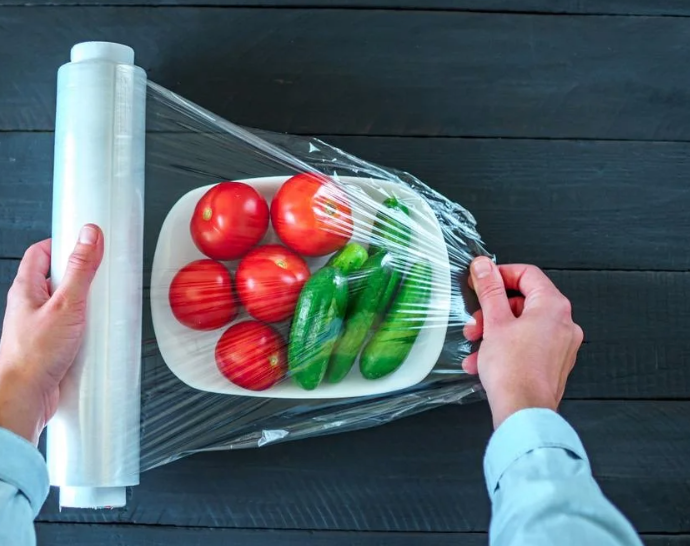
Vegetal Chitosan in Food Thin Films
Vegetal chitosan, derived from fungal sources such as mushrooms and Aspergillus Niger, is an excellent biopolymer for food-grade thin films due to its biodegradability, non-toxicity, and antimicrobial properties.
It forms edible and biodegradable films that can be used for food packaging, coating applications, and preservation, enhancing food safety and shelf life. With its acid solubility and high film-forming ability, vegetal chitosan creates transparent, strong, and flexible thin films, making it an ideal natural alternative to synthetic packaging materials.
When comparing mushroom chitosan and Aspergillus Niger chitosan, both have similar molecular structure, purity, and degree of deacetylation (DD), leading to comparable film properties.
However, mushroom chitosan may offer slightly better flexibility and solubility, while Aspergillus Niger chitosan tends to produce stronger, more rigid films.
The choice between the two depends on specific application needs, such as strength, flexibility, and moisture resistance.
By selecting the appropriate viscosity grade (e.g., 600-1000cps for strong and durable films), vegetal chitosan can be tailored to meet various food preservation and sustainable packaging requirements.
At Chibio Biotech, we can provide Acid-soluble mushroom or aspergillus niger chitosan with viscosity: 200cps, 400cps, 600cps, 800cps, 1000cps.
A. About Viscosity:
For making thin films, the best choice among the acid-soluble chitosan options (200cps, 400cps, 600cps, 800cps, 1000cps) depends on the desired mechanical properties, such as tensile strength, flexibility, and film-forming ability.
Comparison of Different Viscosity Grades for Thin Films
| Chitosan Viscosity | Film Strength | Film Flexibility | Film Thickness | Transparency |
| 200cps (Low) | Weak | Very flexible | Thin | High |
| 400cps | Moderate | Flexible | Thin to Medium | High |
| 600cps | Good | Balanced | Medium | Moderate |
| 800cps | Strong | Slightly less flexible | Medium to Thick | Moderate |
| 1000cps (High) | Very strong | Less flexible | Thick | Slightly opaque |
Best Choice for Thin Films:
- For strong, durable films: 800cps or 1000cps (higher viscosity = higher molecular weight = stronger films).
- For balanced strength & flexibility: 600cps (good compromise between strength and flexibility).
- For ultra-thin, highly transparent films: 400cps (lower viscosity = better film clarity and softness).
- For soft, highly flexible films: 200cps (but may be too weak for structural applications).
Recommendation:
- If high tensile strength is needed → 1000cps.
- If good strength + flexibility is needed → 600-800cps.
- If very thin & transparent films are needed → 200cps, or 400cps.
B. About the source:
Considering mushroom chitosan and Aspergillus Niger chitosan have the same degree of deacetylation (DD), purity, molecular weight, cost, and structural composition, then their film-forming properties should be very similar. However, the source of chitosan (mushroom vs. Aspergillus Niger) may still have minor differences in performance due to:
1. Impurities and Trace Components
- Mushroom Chitosan: May contain small amounts of polysaccharides (e.g., β-glucans) from the fungal cell wall, which can slightly enhance film flexibility.
- Aspergillus Niger Chitosan: Typically more purified, leading to slightly stronger films but potentially less flexible.
2. Solubility and Film Uniformity
- Mushroom Chitosan: Often slightly more soluble in acidic solutions, which could lead to better film uniformity.
- Aspergillus Niger Chitosan: Similar solubility, but may have better consistency in film thickness due to fewer polysaccharide impurities.
3. Film Strength vs. Flexibility
| Property | Mushroom Chitosan | Aspergillus Niger Chitosan |
| Tensile Strength | Slightly lower | Slightly higher |
| Flexibility | Better | Slightly less flexible |
| Transparency | High | High |
| Water Absorption | Slightly higher | Slightly lower |
Which Source is Better for Thin Film?
- If you need higher flexibility → Mushroom Chitosan may be slightly better.
- If you need stronger, more rigid films → Aspergillus Niger Chitosan may be preferable.
- If both have identical properties, the choice may depend on availability, or regulatory considerations in specific applications.

